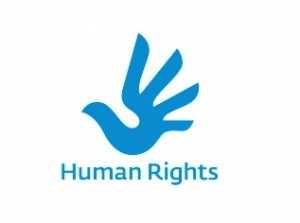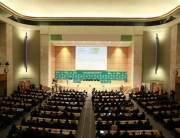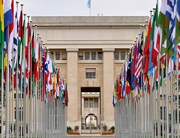Project Description
5 February 2016
by Josh Scheinert
Josh Scheinert is an international investment and human rights lawyer based in Toronto.
In late December 2015 the Indian government released th e final text of its new Model Bilateral Investment Treaty (BIT). A draft text had been released in March 2015 and opened to public consultation. Going forward, India will try to use this new Model as a basis for its BIT negotiations with other States. As this opinion piece argues, the final text represents a missed opportunity. It reflects the standard features of BITs as we know them today, and has removed important features that would have reinforced India’s sovereignty and the protection of human rights.
e final text of its new Model Bilateral Investment Treaty (BIT). A draft text had been released in March 2015 and opened to public consultation. Going forward, India will try to use this new Model as a basis for its BIT negotiations with other States. As this opinion piece argues, the final text represents a missed opportunity. It reflects the standard features of BITs as we know them today, and has removed important features that would have reinforced India’s sovereignty and the protection of human rights.
Indeed, the March 2015 draft text contained a number of noteworthy features that represented a real chance for India to respond to the growing criticisms of IIAs as tools that do little to ensure investment delivers the public goods it promises.
State Sovereignty
When the initial draft text was released, it included unique provisions aimed at preserving certain aspects of State sovereignty in relation to international investment and investors. It also contained provisions giving greater prominence to the need for investors to respect principles of good governance and human rights prescribed by the State. It did both these things, in my view, while still protecting the hallmarks of international investment and the rights of investors.
Some of these provisions represented a chance to bring equilibrium to international investment law, which has been heavily criticized for disproportionately favouring the concerns of international investors at the expense of those of States and local communities directly affected by the investment activity. The attempted rebalance was to set out investor protections in a manner that would not frustrate domestic policy objectives or attempts by local populations to access justice against those investors who allegedly caused them injury or loss.
For example, the initial draft Model BIT tried to set a new tone with respect to the concept of a State’s right to regulate. It affirmed that the State has a right to regulate investments “in their territory in accordance with their law and policy objectives.” The initial draft text also included the caveat that the State also possesses, “the right to change the conditions applicable to such Investments.” The caveat, an important component of the right to regulate, is not found in the Preamble of the final text.
The removal of this pronouncement is unfortunate because it buttresses the criticism that BITs and international investment agreements (IIAs) lock States into providing levels of treatment to foreign investors long after that treatment corresponds to or furthers the State’s own policy objectives. Furthermore, the final text missed an opportunity to demonstrate that a State’s right to regulate can be compatible with provisions protecting treatment for investors and investments. In instances when a State exercises its right to alter the conditions of investment, the question becomes how those conditions may be altered.
Another key way in which the initial draft sought to reaffirm India’s sovereignty concerned the prohibition on expropriation. All BITs and IIAs contain prohibitions on expropriation, and this one is no different.
The Model BIT’s draft and final versions also include a clarification that acts do not constitute prohibited expropriation if they are “non-discriminatory measures… designed and applied to protect legitimate public interest or public purpose objectives such as public health, safety and the environment.” A key feature of the initial draft added that assessments over what constituted a legitimate public purpose were reserved solely for the Indian State. International arbitration panels, who are given the power to make these assessments under most BITs and IIAs, were expressly precluded from being able to pronounce whether or not a challenged measure could be deemed a legitimate public purpose in the Indian context.
Decisions over what constitutes legitimate public purpose objectives, and what must be done to protect and advance those objectives, presumes intimate familiarity with India’s domestic context. The measures in question would have been discussed and decided upon by officials within the Indian government as a means to advance its national priorities around public health, safety, and the environment. Steps necessary to safeguard public health, safety and the environment are not the same around the world. It is the actors on the ground who are best equipped to respond to their specific challenges.
Now, however, these assessments remain in the hands of international arbitrators who may lack familiarity and knowledge of India’s unique challenges. Pointing out the shortcomings of arbitrators engaging in these assessments is not meant to detract from their abilities or intentions. However, it begs the question whether sovereign States should be submitting to a form of international judicial review to assess both the interpretation of key national priorities and the means used to achieve such priorities – especially when domestic opportunities to review said decisions exist.
Human Rights
 When it comes to efforts to improve human rights and good corporate citizenship norms, the most glaring discrepancy between what the Model BIT sought to achieve versus what it actually achieved comes with the modifications to Chapter III of the initial draft text, entitled “Investor Obligations”.
When it comes to efforts to improve human rights and good corporate citizenship norms, the most glaring discrepancy between what the Model BIT sought to achieve versus what it actually achieved comes with the modifications to Chapter III of the initial draft text, entitled “Investor Obligations”.
In the initial draft’s introduction, Chapter III sought to ensure that international investment is conducted in a manner consistent with Indian law and that it enhances ‘inclusive growth and sustainable development.’ These corresponding obligations, it noted, constitute the minimum required; thereby, attempting to raise the bar in terms of good corporate citizenship. Chapter III went on to detail the obligations that investors and investments have in the areas of: anti-corruption, information disclosures, taxation and compliance with specific Indian laws.
The final text of the Model BIT removed the introductory language that set out the context for the obligations that followed. Only a skeletal and general summary of the original obligations remain.
This absence of specificity leaves the final text wanting in multiple respects. The initial draft clearly laid out India’s expectations in terms of investor conduct – upfront before any investment activity commences. The expectations set out in the initial draft could have been used by investors as a guide during the lifespan of their investments. The language guided investors as to what financial and accounting disclosures they may be required to make. It guided them as to what kind of conduct was impermissible in terms of lobbying government officials. And most importantly, the draft language guided investors as to the precise laws, including those concerning human rights and the environment, by which they were expected to abide.
Now, none of that specificity is provided, and investors are only told that they must abide by laws and regulations concerning the management and operation of investments. Any mention of adherence to laws promoting labour rights, human-rights, and environmental conservation has been removed. While human rights laws are relevant to the management and operation of an investment, the detailed guidance in the initial draft more clearly laid out the expectations India places on investors. Given the growing importance investors place on the concept of legitimate expectations, such guidance should have been welcomed.
The long list of expectations set out in the initial draft could have also been relied upon by tribunals for measuring an investor’s legitimate expectations, and acts that could have breached them. It could have helped explain the context in which State decisions over certain actions were taken. However, without precise wording delineating an investor’s obligations, a tribunal will be more reticent to find that State action aimed at remedying an investor’s failure to meet its expectations does not constitute a breach of the BIT.
In the absence of setting out detailed expectations on corporate citizenship and human rights, Chapter III is left only with a provision that invites investors to voluntarily assume principles of corporate social responsibility. Voluntary in nature, this can carry little weight and offers little prospect of facilitating greater positive corporate citizenship by investors or ameliorating human rights challenges posed by international investment. The provision, as written, places no actual requirements on an investor and; therefore, it remains unclear to what extent tribunals will rely on it, if at all.
Lastly, two means by which the Indian government sought to imbue a degree of investor accountability in the initial draft’s provisions concerning good corporate citizenship and human rights have also been removed. The initial draft included terms that would have permitted counterclaims by India in arbitration proceedings for alleged violations of the investor obligations set out in Chapter III. It also included requirements that the home states of investors afford jurisdiction to claimants who wish to bring civil actions in the investor’s home jurisdictions for alleged damages suffered. These provisions could have been important steps forward for advancing human rights norms in international investment law and for transnational corporate accountability for human rights abuses – two areas of law that continue to face uphill challenges.
In the end, India’s new Model BIT serves to reinforce the notion that internatio nal investment, and correspondingly IIAs and BITs, further corporate interests at the expense of human rights, sustainable development and local communities. As negotiations for important multilateral investment agreements, such as Transatlantic Trade and Investment Partnership (TTIP), proceed, scholars and advocates continue to argue that the investor protections in these agreements do not necessarily serve a State’s interests.
nal investment, and correspondingly IIAs and BITs, further corporate interests at the expense of human rights, sustainable development and local communities. As negotiations for important multilateral investment agreements, such as Transatlantic Trade and Investment Partnership (TTIP), proceed, scholars and advocates continue to argue that the investor protections in these agreements do not necessarily serve a State’s interests.
The initial draft text of India’s Model BIT, and its attempt to reconcile seemingly competing priorities, acted as a response to their claims. Yet, the final text seems to ignore them. There may, however, be hope that new IIAs will do a better job of safeguarding State’s interests and the rights of people adversely impacted by investment. Recently, it was disclosed that the EU is attempting to renegotiate the investment chapter in the Canada-EU Comprehensive Economic Trade Agreement (CETA) to better address some of the criticisms raised over investor protections. While the new India Model BIT does not offer anything new, the initial draft text is one place to look for inspiration.
*The views expressed here do not necessarily represent those of the LSE or the Investment & Human Rights Project.










